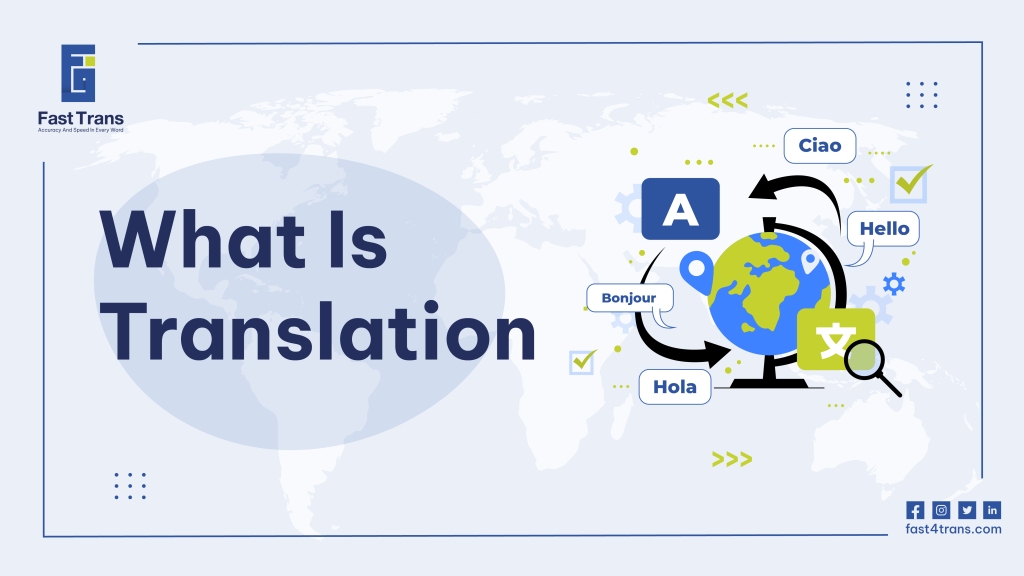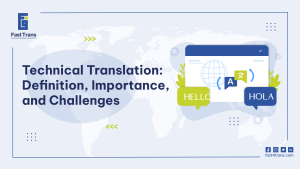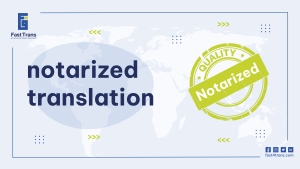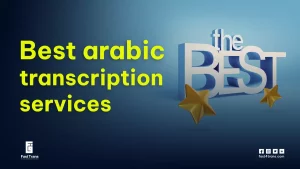Arabic translation is the art of converting text into Arabic while preserving meaning and cultural relevance. Arabic Translation Techniques range from direct methods like borrowing and literal translation, which stay close to the original text, to indirect ones like transposition and modulation, which adapt the message to fit Arabic syntax and cultural nuances. This blend of precision and creativity ensures that translations resonate with Arabic speakers, balancing accuracy with readability and cultural connection.
What Is Arabic Translation?
Translation refers to converting the meaning of ANY kind of text from one language into Arabic. The original text is referred to as the Source Text, while the translated one is called the Target Text. It aims to preserve the original meaning, as well as achieve communication with the reader.
Translation refers to a need, a process, and a demand. Translation first came out of a need to connect with the world.
It is an interdisciplinary field that people always ascribe to transcending cultural borders, and that is true. It is one way for people to connect.
Moreover, translation also refers to the process that is usually done by a translator or a linguist to take the words and meanings of a certain text and write it down in a different language.
Lastly, translation is on demand. The world simply can’t live without translation. Educational, economic, and industrial systems rely on translation, and many people daily benefit from translation.
The Concept of Translation
A concept can refer to a methodology and an essence.
Translation in essence is not concerned with a word-for-word conversion of a text. The earliest attempts at translation were not primitive or simple renderings but acquired significant linguistic and cultural milestones.
According to the French scholar and translator Etlienne Dolet in his book La Manière de Bien Traduire d’une Langue en Aultre. He divided the concept of translation into 2 main principles:
- The translator must have a full understanding of the source & target languages and must comprehend perfectly the source language
- The translator is well-read in the subject matter of the text at hand.
But, the process of translation proves to be more complicated than that. Let’s look at the current techniques in translation.
What are the Arabic Translation Techniques?
There is a famous debate among academicians and translators about which is better: A word-for-word translation that is loyal to the source text, or a non-literal translation that’s loyal to the target reader? Apparently, this debate is as old as the discipline itself.
The so-called “sense-for-sense” translation was coined by Jerome, a great translator of the Bible, who stated that the translator needed to translate “not word for word” but “sensum de sensu.”
The Arabic translation techniques we know now can be divided into Direct and Indirect:
Direct Translation Techniques
When both the source language structure can be used in the target text, direct translation techniques are employed. Direct translation techniques in Arabic include borrowing, loan translation, and literal translation.
1. Borrowing
Can you think of a word that is used in your native Arabic language that is taken from another language?
For example, the word café in English is borrowed from French. Similarly, Arabic might use the word Internet as is, due to its global recognition.
In Arabic, the word Niqab (referring to the face veil worn by women) has no direct equivalent in English, which shows how this technique is used when there’s no equivalent term in the target language.
2. Loan Translation (Claques)
Instead of borrowing the word, a translator may translate it into Arabic. For instance, “Ubermensch” in German philosophy is translated into English as “superman” and into Arabic as al-insān al-‘ālī (الإنسان الأعلى).
3. Literal Translation
This technique remains faithful to the source text, translating words directly in the same meaning and order. However, in Arabic, this technique may be challenging due to structural differences in grammar and syntax between Arabic and other languages, especially when idiomatic expressions are involved.
Indirect Translation Techniques
Unlike direct translation, indirect translation techniques change the structure of the source text and favor meaning over literal adherence to the text. This is particularly important in Arabic translation, given the significant differences in grammar, syntax, and cultural expressions between Arabic and other languages.
1. Transposition
A basic technique of indirect translation is shifting of grammar, especially between texts that come from vastly different languages like English and Arabic. This could involve changing a verb into a noun, or an adjective into a noun, as Arabic often uses different syntactic structures compared to other languages.
2. Modulation
This technique adjusts the text to make it more readable and comprehensible to the reader while preserving the meaning and effect. For example, in Arabic, certain expressions or turns of phrase are modified to better match cultural expectations or linguistic patterns, ensuring the translation sounds natural.
3. Equivalence/Reformulation
The equivalence technique attempts to find an equivalent term or expression in Arabic. This is often used with idiomatic expressions. For instance, in English, the phrase “heartwarming” may be expressed as athlaj sadri (أثلج صدري) in Arabic, which literally translates to “heart-icing,” reflecting how emotions are described differently in different cultures.
4. Adaptation
Adaptation involves adjusting cultural references so they resonate with Arabic-speaking audiences. For example, a reference to a Western holiday might be changed to a local Arabic celebration, such as Ramadan or Eid. This makes the text culturally relevant and relatable to the target audience.
5. Reduction
To avoid redundancy, a translator might remove words that don’t contribute meaningfully to the target text. This is particularly common in Arabic, where certain expressions can be condensed to maintain flow and clarity without losing essential meaning.
6. Expansion
Expansion is the opposite of reduction. In Arabic, additional words may be needed to preserve the intended meaning, often due to the differences in sentence structure, terminology, or the need to clarify certain concepts in a more descriptive way.
Read more about translation costs per hour rate
What are some types of translation?
Key types of translation include legal, literary, medical, journalistic, and religious, each requiring specialized knowledge and accuracy for effective communication across diverse fields. These areas ensure critical information is accurately conveyed in global contexts, from court documents to cultural stories.
1. Legal Translation
Legal translation is one of the most famous types for valid reasons.
First, it entails a great variety of documents, from birth certificates to company contracts, and reports, to court documents like court proceedings, and judicial acts.
Secondly, it is crucial for any international communication. In legal writing, anything could go wrong, and consequently cost people financial loss. For this, legal translators step in and make sure everything is accurate.
2. Literary Translation
One of the earliest forms of translation. When the seeds of globalization started to form, literary translation facilitated the interconnectedness of cultures. The power of stories, and poetry, ancient or modern had to transcend the borders of its country. One author in China writing great novels would have never been discovered by people in Africa or America if not for the help of translation.
However, literary translation is tricky, it requires creativity and a solid background in literary structures.
3. Medical Translation
The field of medicine, healthcare, and pharmaceuticals is foundational and encompasses various types of documents. It is one field of specialized or technical translations because not every translator can handle medical texts unless they are familiar with their terminology.
4. Journalistic Translation
A demanding specialised field of translation is the journalistic one. It concerns itself with the translation of news articles mainly and other texts of a journalistic nature like reports or interviews.
Journalism is an exciting field, it brings the news to the audience in a compelling yet simple way. Journalistic translators carry on this task. They adapt the source text to make it compelling, accurate, and appealing to a wider audience. It also entails lots of language play.
5. Religious Translation
The earliest translations known to us now were of a religious nature, such as the translations of the Old Testament.
The ancient world has been a troubling one, people needed rules and laws to draw some order into their daily lives. Translation of religious texts was crucial to help spread awareness of religion in many parts of the world.
Religious translation is one kind of specialized translation. It requires knowledge of religion and attention to detail. It could encompass anything from scripture, and manuscripts, to religious online content, and religious books.
These are only five essential fields of translation, we have published a comprehensive article gathering in-depth information about 15+ types here: Types of Translation
Read more: How Translators Use Context for Accurate Translations?
What is translation history?
It’s needless to mention that translation is not a modern field. Although it has never been as developed as now, yet many accounts prove that translation goes back to the 1st century BC.
Meaning of the word in antiquity
The word ‘translation’ in etymology had an interesting upbringing ever since the Greek and Roman ages.
In Latin, the word translation literally meant ‘ to carry across’. While in ancient Greek translation was “metaphrasis” which meant ‘ to speak across’. Metaphrase evolved until it referred to a word-for-word translation.
Let’s have a look at some of the most detrimental events in the history of translation:
The discovery of the Rosetta Stone In 1799
Rosetta Stone is one of the most visited displays in the British Museum. It is inscribed in three languages: Egyptian hieroglyphic, Demotic, and Ancient Greek.
The Stone was a groundbreaking discovery attributed to the field of translation as we know it today because it decoded the language of the Pharaohs!
The Epic of Gilgamesh
This Mesopotamian epic poem is regarded as the earliest literary translation that the world knows of.
Early Religious Translations of the Bible ‘Septuagint’
This one dates back to the 3rd century when there was a need for religion and for translating religious text to spread religion to different people.
Here, we’re referring to the translation of the Old Testament from Hebrew into Greek. It became a cornerstone to other multiple bible translations that followed.
Other Important Milestones in the History of Translation
- The Tower of Babel.
- The Translation of Scientific Works by Ibn al-Haytham.
- The printing press.
- The Translation of Chinese Literature into European Languages.
- The Industrial Revolution.
- The Universal Declaration of Human Rights.
- Advent of Computer & its translation software.
- International Translation Day Sep 30, 1991
- Machine translation.
Read more: What is financial translation?
What Is The Difference Between Translation And Interpreting?
Translation is often referred to as textual or written, meaning that it only deals with written text. However, translation has several mediums other than the textual one, like the voice medium.
Interpreting differs from translation on many levels.
Firstly, it is time-sensitive. Simultaneous translation is required on the spot.
Secondly, it requires accuracy, impeccable and unmistakable understanding of the language pair.
Thirdly, interpreting is a two-way road. It keeps going back and forth between the speaker and the interpreter.
Fourthly, interpreters do not check dictionaries.
Fast Trans: your strategic partner in the MENA region
Fast Trans is a translation company based in North Africa, Egypt. We provide over 18+ translation and localization services in all languages across several countries around the world.
Whether you are settling newly in any of the MENA countries, or expanding your foreign business in the Middle East, our company has so much to offer to its clients, breaking language barriers, one word at a time.
Conclusion
Arabic translation involves converting text from any language into Arabic, maintaining the original meaning while making it comprehensible for the target audience. This field is crucial for facilitating cross-cultural communication, with various techniques employed to ensure accuracy and cultural relevance. The process includes both direct and indirect methods. Direct techniques, such as borrowing and literal translation, retain the source text’s structure, while indirect techniques, like transposition and modulation, adapt the text to fit the target language’s unique syntax and cultural expressions.
The debate between word-for-word and sense-for-sense translation has led to the development of various Arabic translation techniques. These techniques are essential due to significant differences in grammar, syntax, and cultural context between Arabic and other languages. For example, transposition alters the grammatical structure, while modulation adjusts phrases for better readability. Additionally, equivalence and adaptation ensure that idiomatic expressions and cultural references resonate with Arabic-speaking audiences, making translations both accurate and culturally appropriate.











